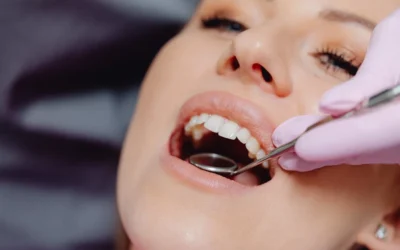Cosmetic dentistry has given many patients the smile they’ve always wanted. One of the more popular cosmetic options is veneers. Veneers are thin shells that cover the front of your front teeth to make them look great. If you are considering veneers, check out these five terms you should know first, so you know exactly what to expect.
1. Porcelain
When used in dentistry, porcelain doesn’t refer to fragile material that will easily break. Instead, it refers to a hard tooth-colored material. Porcelain is a popular choice because not only can it be colored to match the rest of your teeth (or give you an overall whiter smile), the material also looks similar to tooth tissue.
Unlike porcelain crowns, however, porcelain veneers do not have a layer of metal underneath. For this reason, they may not be as durable as crowns, making them a poor choice if you have weak teeth. On average, you can expect to spend about $1,000 per tooth for a porcelain veneer, and it may last 10 to 15 years or more with good care.
2. Composite Resin
Composite resin is a cheaper and faster alternative. You may only sped about $250 per tooth for composite resin veneers. The process also doesn’t need a lab to produce the veneer. The dentist simply puts the composite resin on your teeth and shapes it during one visit. The veneers should last about five to seven years with good care.
The end result is white teeth, and like porcelain, composite veneers can fix chips, cracks and hide gapping. The downside to composite resin is that it doesn’t mirror the look of tooth tissue as well as porcelain. So your smile will look good, but if people look close, they will be able to tell you have veneers.
3. Preparation
Before a veneer can be placed, the tooth needs to be prepared. This involves removing a thin layer of enamel. This weakens the tooth to decay, but the veneer will better protect than enamel. Luckily, much less tooth tissue is removed for veneers than with dental crowns. In most cases, composite resin veneers require the least tissue removal.
Because little tissue is removed, there is less risk of causing damage to the tooth’s pulp, which is a real risk with dental crowns. Any damage to the pulp can lead to a future infection, which will require extraction or costly root canal treatment to fix.
4. Dental Cement
If you get porcelain veneers, dental cement is needed to secure the veneers into place. At first, the dentist will used temporary cement with a temporary veneer as the permanent porcelain veneer is crafted in the lab. Once the veneer is completed, it is sent back to the dentist who can use permanent cement for the permanent veneer.
The cement is durable, but if you don’t take proper care of your teeth with good brushing and flossing, it can start to breakdown. Once plaque and bacteria get inside, the cement may fail and the veneer may fall off.
5. Gum Recession
Gum recession can be caused by many factors, but typically, anything that irritates your gums will cause them to recede. Unfortunately, this includes veneers. Both porcelain and composite resin are less irritating than metal, but without good oral care, your gums can start to recede because of the veneers.
If this happens, you run the risk of experiencing greater risk of bacteria reaching the dental cement. If the veneer fails and falls off, you have to replace it to protect your tooth now that it doesn’t have much enamel.
Veneers can give you a beautiful smile, but without good oral care, the veneers can break down faster, costing you money sooner. If you would like to know more about dental veneers or other cosmetic dental options, contact us at Cherry Hill Dentistry LLC.





0 Comments